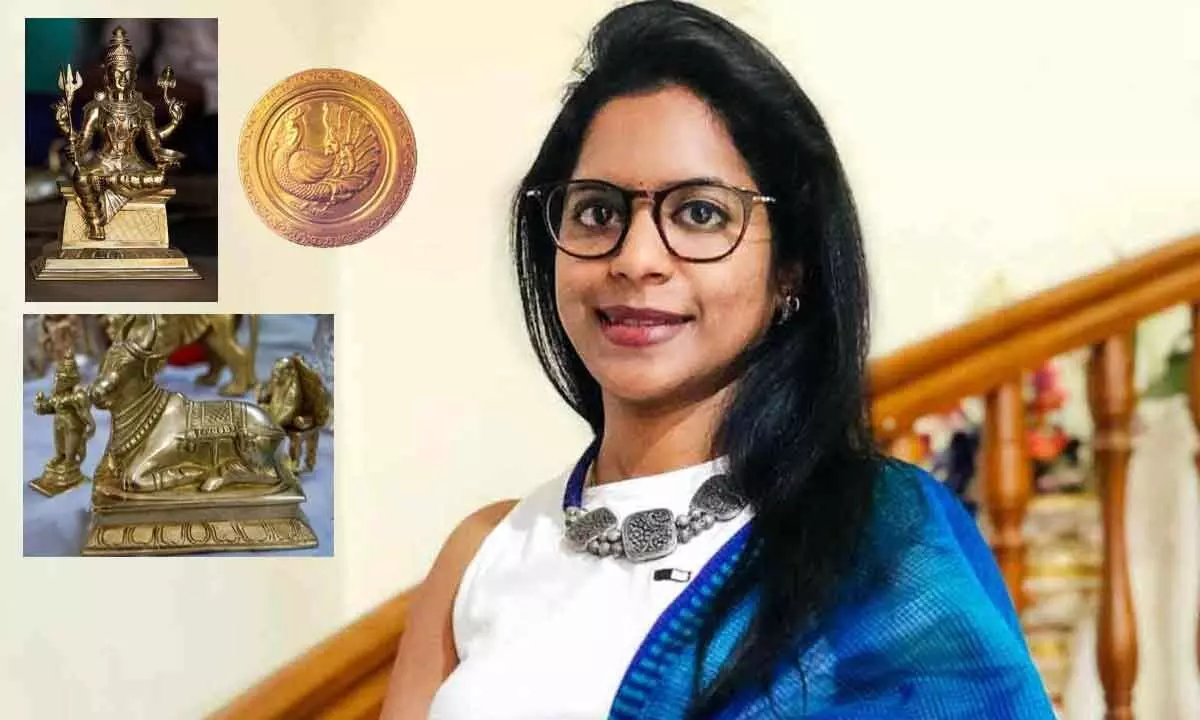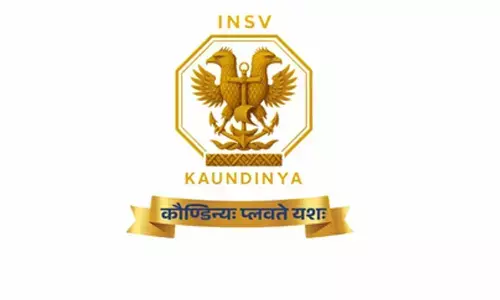Brassy sun rays – brought to you by Budithi

The humble shine from various idols and artifacts and the sweet resounding of these exquisitely crafted brass beauties clanging against one another is one of the most underrated experiences among most Indian households.
The humble shine from various idols and artifacts and the sweet resounding of these exquisitely crafted brass beauties clanging against one another is one of the most underrated experiences among most Indian households. And to what do we owe this pleasure? To the glory of Budithi.
Budithi, a beautiful small village in the Srikakulam district of Andhra Pradesh, has forever been synonymous with its craft-making of bronze and brassware. But its glory, unfortunately, has become a thing of the past. Today, less than 20 surviving units and 30 families are toiling to resuscitate this 200-year-old of a dying rural craft. Furthermore, only three families are into the art of brass idols, and only one family is into bronze making, with the rest trained for the craft of making brass vessels. Seemingly similar as they may look, brass and bronze are entirely different metals that demand different skill sets for their respective crafts; therefore, differently trained artisans too. However, Budithi is challenged to save itself from the threat of extinction.
Referred to as 'kanchu' in Telugu, bronze is an extremely heavy metal sought-after for its various healing properties in Ayurveda. From Bronze bells (also known as bell metal) and utensils to idols and tools made of brass, Budithi's popularity in this segment knows no bounds. Although brassware is extensively used and made available across the country, the genuinely handmade ones find their origins in Budithi and a few other clusters. With festivals central to our country's culture, brassware remains a special place among the Hindus as many brass idols are still used in temples, households, and weddings. But only an alarming number of three families continue to make brass idols in Budithi today.
On the other side, bronze idols also feature in every Hindu temple as Utsava Vigrahalu (Festive Idols) even today – bringing out the majesty of our many Gods and Goddesses bejewelled and armoured to shine in their brightest splendour. As for the realm of utensils and their usage, bronze cookware is now a rarity – both in the kitchen and as decorative items; with only a single artisan in Budithi who continues to make these utensils. Just one.
The items mentioned above are made using broadly two techniques – one with brass sheets and the other with a casting technique. The brass sheets are sourced from outside Andhra Pradesh to make items such as bindelu (metal vase-like-pots), satagopam (sacred bowls), big plates, jewellery, and armour for the idols in temples. And items such as bells, bronze vessels and brass idols are made using the casting technique – which employs a three-step process of making a sand mould, followed by pouring the molten metal onto the hollow and refining the final product post cool down.
This laborious craft today stands at the mercy of a few families dedicated to its posterity sustenance. A village, that once used to resound to the continuous rhythm of hammers at work by 200 dedicated families, is now limited to a mere 20 families in total – despite the craft receiving a GI tag in 2008. One of the few remaining artisans even remarked that both his sons are today well-educated and well-placed in their respective lives, but he regrets not bringing them into his lineage of this craft. For, even he couldn't foresee today's grave state of affairs.
Not long ago, brassware and bronze were not just metals, but a way of life. From Marachombu to Gangalam, one cannot imagine a household without these wonderfully useful and aesthetic items. Why go as far as anyone else? Haven't you grown up amidst the glory of brassware and bronzeware that was so dutifully passed on to you from your grandparents? The reflexive nod to this question has a bitter-sweet touch to it – bitter because of its dying nature and sweet because of fond memories and a hope for a brighter future.
Yes, the demand today may be seasonal – given that weddings in India are limited to certain months in the calendar. But can you imagine a tomorrow without these bronze and brass beauties? Can you think of being a part of a Telugu wedding without the good old ittadi bindelu (brass vases), chembulu (cups) and pallams (plates)?
The fact that your heart aches of such a tomorrow calls for action today. So, let's bring the lifestyle of brass and bronze back into vogue. Will you join this movement?
(The writer is a handloom and handicraft enthusiast. She is also a member of the crafts council. Instagram handle: Rajeswariramachander)

















